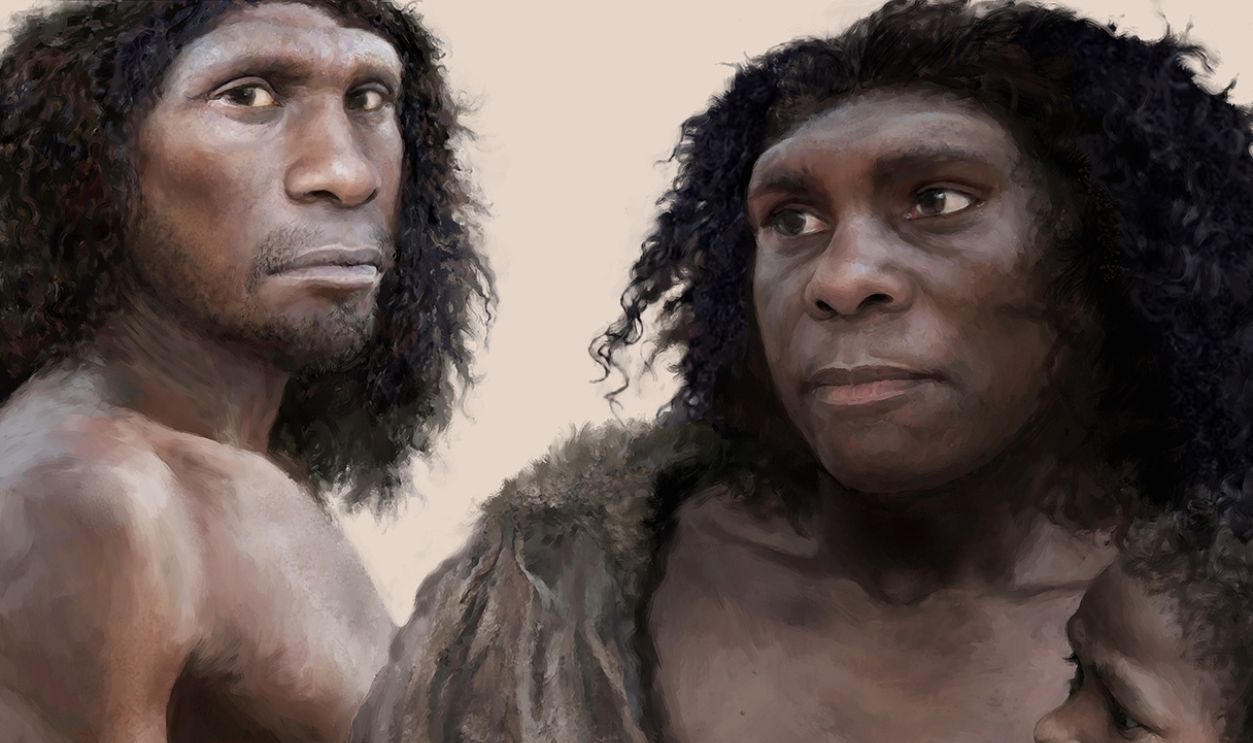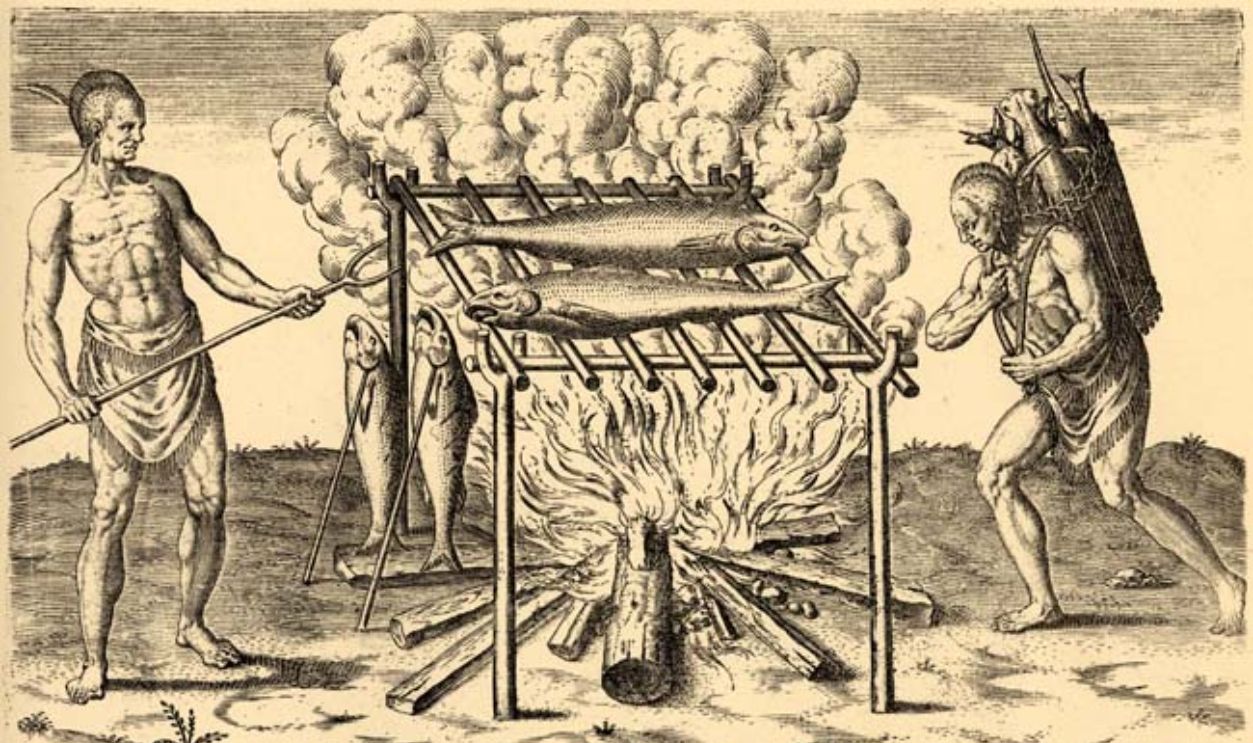Unearthing Ancient Culinary Practices
As you ponder your choices at your favorite restaurant, remember that ancient civilizations played a role in shaping what’s on the menu. Here's what archaeologists uncovered at a site in Israel, perhaps one of the earliest kitchens.

The 780,000-Year-Old Cooking Site
Scientists have uncovered the oldest known evidence of cooking at Gesher Benot Ya’aqov, an archaeological site in Israel. The discovery of charred fish teeth and remains suggests early humans were chefs too, cooking meals nearly 800,000 years ago. This challenges previous assumptions about humans using fire for meals.
Who Made The First Find?
The initial discovery was made by a team excavating the ancient site in the Hula Valley. As they unearthed what seemed like a usual chunk of soil, they found burnt fish teeth. What? Imagine digging and you unearth fish teeth. Crazy, right? So…
 Jotpe, CC BY-SA 4.0, Wikimedia Commons
Jotpe, CC BY-SA 4.0, Wikimedia Commons
This Prompted To Call In The Experts
From what they got, it became clear that early humans were cooking fish far earlier than previously believed. This led to collaboration with experts in archaeology, geochemistry, and evolutionary biology to verify the findings. They had to bring in the best to give what they had found meaning.
 Primitive Stone Age cooking fish (kids) by Primitive Stone Age
Primitive Stone Age cooking fish (kids) by Primitive Stone Age
Leading The Discovery
This groundbreaking research was led by Dr. Irit Zohar from Tel Aviv University and Dr. Marion Prévost from the Hebrew University of Jerusalem. Their study is a huge deal because it sheds new light on prehistoric diets. It highlights that early humans had a more “balanced diet” than we had previously thought.
 MathKnight, CC BY-SA 3.0, Wikimedia Commons
MathKnight, CC BY-SA 3.0, Wikimedia Commons
A Team Effort
Alongside Zohar and Prévost, Professor Naama Goren-Inbar from Hebrew University contributed vital insights into early human cognitive abilities. Dr. Jens Najorka from London analyzed fish teeth using geochemical methods, revealing how early humans controlled fire to cook their meals.
 Gonen sharon, CC BY-SA 4.0, Wikimedia Commons
Gonen sharon, CC BY-SA 4.0, Wikimedia Commons
The Science Used Here Was World-Class
The team came educated and well-equipped. They used advanced techniques to study fish enamel crystal changes to identify cooking temperatures between 200–500°C. Their work, published in Nature Ecology and Evolution, highlights the sophistication of Acheulean hunter-gatherers and how their mastery of fire helped shape human evolution.
 Ajiimai, CC BY-SA 4.0, Wikimedia Commons
Ajiimai, CC BY-SA 4.0, Wikimedia Commons
A New Perspective On Early Humans Unearthed
These findings redefine how scientists view early human diets and migrations. By proving that freshwater fish were essential to survival, the researchers highlight the role of lakes and rivers in shaping prehistoric settlements. It has paved the way for future studies on early human behavior and adaptation.
 H. Zell, CC BY-SA 3.0, Wikimedia Commons
H. Zell, CC BY-SA 3.0, Wikimedia Commons
Evidence Near Phantom Hearths
Researchers examined pharyngeal fish teeth found near phantom hearths—clusters of burnt flint micro artifacts—at Gesher Benot Ya’aqov. Pharyngeal fish refer to fish species that possess pharyngeal jaws. These are a second set of jaws located in the throat, behind the primary oral jaws.
 Harry Govier Seeley, Wikimedia Commons
Harry Govier Seeley, Wikimedia Commons
More About Pharyngeal Fish
Pharyngeal jaws evolved from modified gill arches and are used to further process food by grinding, crushing, or repositioning it before it moves to the stomach. Pharyngeal fish species are native to the Hula Valley in Israel because of the region’s unique freshwater habitats.
What Pharyngeal Fish Species Did They Find?
Archaeologists identified two large freshwater fish species from the Cyprinidae family at Gesher Benot Ya’aqov: The Jordan barbel (Luciobarbus longiceps) and the Jordan himri (Carasobarbus canis). Once abundant in Lake Hula, these fish were highly nutritious: Rich in protein and unsaturated fats.
 Borkenhagen K, Krupp F, CC BY 3.0, Wikimedia Commons
Borkenhagen K, Krupp F, CC BY 3.0, Wikimedia Commons
Today, The Jordan Barbel Is A Species At Risk
The Jordan barbel is a freshwater fish native to the Jordan River basin. Once abundant, its population has declined due to habitat loss and water pollution. Categorized as Endangered by the IUCN, this species faces threats from dam construction, water extraction, and environmental changes.
 Neil Phillips from uk, CC BY 2.0, Wikimedia Commons
Neil Phillips from uk, CC BY 2.0, Wikimedia Commons
What About Jordan Himri?
You will still find the Jordan Himri inhabiting freshwater systems in Israel, Jordan, and Syria. However, it is listed as Near Threatened due to pollution and habitat degradation. Conservation efforts are in play to preserve these species. Now, back to the early humans.
 Borkenhagen K, Krupp F, CC BY 3.0, Wikimedia Commons
Borkenhagen K, Krupp F, CC BY 3.0, Wikimedia Commons
They Now Had Fish On The Menu, Cooked, Not Raw
Analysis of fish teeth from the site offers us a glimpse and exposure to controlled heat, indicating that early hominins deliberately cooked their food. This suggests that they might have understood the benefits of cooking, such as easier digestion. Their experiments paid off because today, fish is a staple.
 Primitive Stone Age cooking fish (kids) by Primitive Stone Age
Primitive Stone Age cooking fish (kids) by Primitive Stone Age
Nutrient-Rich And Delicious
The Jordan barbel and Jordan himri, two freshwater fish, were prized for their rich, fatty meat. Packed with protein and unsaturated fatty acids, these fish provide essential nutrients for energy and brain development. Cooking them at controlled temperatures gives them a better taste and fastens digestion.
 Borkenhagen K, Krupp F, CC BY 3.0, Wikimedia Commons
Borkenhagen K, Krupp F, CC BY 3.0, Wikimedia Commons
The Oldest Evidence Of Cooking
Now, here is the gist: Researchers found microscopic changes in the enamel of fish teeth to prove they were exposed to temperatures consistent with cooking rather than accidental burning. But hold that thought. How would cooking differ from accidental burning? Here is the science.
 François-Louis Laporte, Wikimedia Commons
François-Louis Laporte, Wikimedia Commons
Cooking Or Accidental Burning?
It’s fascinating how they can tell the difference between intentional cooking and accidental burning just by studying fish teeth. Let’s break this down in a way that’s easier to understand. Think of cooking as a gentle, controlled process—like when you’re carefully grilling fish for dinner.
 Georges Cuvier, CC BY-SA 3.0, Wikimedia Commons
Georges Cuvier, CC BY-SA 3.0, Wikimedia Commons
In Cooking, Everything Is Controlled
The temperatures typically hover around 200-300°C, and this creates specific patterns in the fish teeth enamel. It’s kind of like leaving a consistent fingerprint at a microscopic level. Now, compare that to accidental burning, like what happens in a forest fire.
 Theodor de Bry (1528-1598), Wikimedia Commons
Theodor de Bry (1528-1598), Wikimedia Commons
In Accidental Burning, Everything Is Chaotic
The fires that burn things accidentally are wild and intense, often blazing above 500°C. These would have left a completely different mark on the teeth. It is more chaotic and uneven, like the difference between a carefully drawn line and a scribble. But there is yet another burning question:
 Harry Govier Seeley, Wikimedia Commons
Harry Govier Seeley, Wikimedia Commons
Doesn’t Fish Enamel Also Burn To Ashes After A 500°C+ Blaze?
Like human and mammal enamel, fish enamel is highly mineralized and primarily composed of hydroxyapatite, a calcium phosphate compound. It is highly heat-resistant but can undergo structural changes when exposed to extreme temperatures. So, from 260°C, fish enamel may begin to degrade, discolor, or crack, but…
It Is Unlikely To Turn To Ashes
Complete combustion of such organic materials and significant decomposition of mineral content typically occur at much higher temperatures—closer to 538°C and above. This temperature is extremely hot and generally is the operating temperature for processes like industrial furnaces, kilns for firing ceramics, and certain types of metalworking.
Can An Accidental Fire Get This High?
Yes, an accidental fire can reach temperatures this high, but that depends on the fuel source and conditions. Fires involving materials like gasoline, propane, or other highly flammable substances can generate extremely high temperatures. So, we don’t completely rule out a wildfire, but let’s get back to the story.
How Scientists Know Cooking Vs Burning
The real magic happens when scientists use potent techniques to examine these teeth. They can see how the minerals in the enamel have changed, almost like reading a thermal diary of what happened to that fish thousands of years ago. Pretty cool, right?
How Did They Test The Teeth?
Dr. Jens Najorka, who comes from the Natural History Museum in London, led the analysis using geochemical methods to examine changes in tooth enamel crystals. Burnt teeth showed obvious alterations, but cooked ones—heated between 200 and 500°C—required advanced techniques to detect subtle transformations, confirming controlled cooking by early humans.
 Diliff, CC BY-SA 3.0, Wikimedia Commons
Diliff, CC BY-SA 3.0, Wikimedia Commons
What Were The Findings?
What they found was very interesting. The changes in tooth enamel structure provided the first solid proof of controlled cooking dating back 780,000 years. This discovery changed everything we knew of early human diets and their cognitive abilities in food preparation.
 David Starr Jordan, Wikimedia Commons
David Starr Jordan, Wikimedia Commons
More Findings
Another notable finding was that scientists deduced that prehistoric humans also relied on aquatic food sources besides what they caught and gathered on land. This aligns with theories suggesting early human settlements often formed near water bodies, where food was abundant.
The Reasons To Settle Near Water Bodies Was Beyond Food
Early humans settled near water for drinking, travel, trade, farming, and building materials. Waterways provide power, natural defense, waste disposal, and a stable climate. Rivers hydrated soil for crops and enabled food trading. Many viewed water as sacred, integrating it into rituals, shaping early civilizations, and fostering societal growth.
 Charles Robert Knight, Wikimedia Commons
Charles Robert Knight, Wikimedia Commons
Why They Would Settle Near Gesher Benot Ya’aqov Specifically
The first reason is that it was a strategic location with plenty of resources. Gesher Benot Ya’aqov, in modern-day Israel, offered fresh water from the Jordan River, fertile land, and abundant wildlife. Its location along migration routes provided access to diverse resources, which included plants, fish, and game.
 Lehava Activity 2013 Pikiwiki Israel, CC BY 2.5, Wikimedia Commons
Lehava Activity 2013 Pikiwiki Israel, CC BY 2.5, Wikimedia Commons
Then Came Evidence Of Fire Use
Archaeological evidence also suggests early humans at Gesher Benot Ya’aqov controlled fire, aiding cooking, warmth, and protection (explains the cooked fish). The site’s rich biodiversity and proximity to water might have allowed technological advancements—tool-making. Its favorable conditions made it a key location for prehistoric human adaptation and long-term habitation.
How Early Hominins Mastered Fire For Meal Preparation
The ability to control fire for cooking is a significant milestone. The earliest evidence of controlled use of fire by humans dates back to around 1.7 to 2.0 million years ago. This evidence is primarily associated with Homo erectus, an early human ancestor.
The Culinary Techniques Of Early Humans At Lake Hula
This site, located near Lake Hula, gives us compelling evidence that ancient humans were selective about how they prepared their food. In the same way, we bake or roast, the cooking method likely involved heating fish over embers or placing them in hot ash.
 Daniel Ventura, CC BY-SA 4.0, Wikimedia Commons
Daniel Ventura, CC BY-SA 4.0, Wikimedia Commons
Gesher Benot Ya’aqov Happens To Be One Of The First Sites
Sites like Koobi Fora in Kenya and Gesher Benot Ya’aqov in Israel have provided significant findings, such as charred wood and seeds (and now fish), indicating controlled use of fire. This emphasizes that early humans developed more sophisticated survival strategies that might have led to cognitive and social advancements.
 Walter Siegmund, CC BY-SA 3.0, Wikimedia Commons
Walter Siegmund, CC BY-SA 3.0, Wikimedia Commons
From Catch To Cook
The findings confirm that cooked or roasted fish was part and parcel of the early human diet. The shift from raw to cooked food may have contributed to evolutionary changes, which suggest brain development and reduced energy expenditure on digestion.
 Cliff, CC BY 2.0, Wikimedia Commons
Cliff, CC BY 2.0, Wikimedia Commons
Prehistoric Barbecue
This discovery is also the earliest definitive proof that prehistoric humans gave fire multiple uses: Cooking rather than just warmth or protection. It reshapes our understanding of early human adaptability. Adaptability seems to be something in-built. Go figure!
Besides Fish, They Also Had Starch Grains On The Menu
Think early humans only had meat and fish on the menu? Think again. Starch grains were also a key part of their diet. Possibly even before meat. Starch grains came from acorns, water chestnuts, yellow lily rhizomes, grass grains, and legume seeds. These plant-based foods were rich in carbohydrates.
 Miquel Pujol, CC BY-SA 3.0, Wikimedia Commons
Miquel Pujol, CC BY-SA 3.0, Wikimedia Commons
They Providing Much-Needed Energy
Carbohydrates are a key energy source; early humans slowly found ways to harness them. Starchy foods like acorns and water chestnuts were perfect for long days of gathering. They provided sustained energy for physical endurance and mental focus, which are vital for survival in challenging environments.
 Derek Keats from Johannesburg, South Africa, CC BY 2.0,Wikimedia Commons
Derek Keats from Johannesburg, South Africa, CC BY 2.0,Wikimedia Commons
They Used Sophisticated Stone Tools For Processing
Early humans gathered their food using the right tools for the job. These included Basalt tools, like anvils and mace-like objects, which were used to crush and crack open plant foods like acorns and grains. These tools show how their food-processing skills were. It’s true; these folks were genuinely resourceful.
 Unknown Author, CC BY-SA 2.5, Wikimedia Commons
Unknown Author, CC BY-SA 2.5, Wikimedia Commons
How They Enjoyed These Foods
Early humans had to use simple processing techniques to make these starches more edible. Acorns were soaked to remove bitterness, while grains were ground into flour for flatbreads. The meat? Raw and now roasted: In the same way, we have found ways to make complete meals and snacks.
 David Hill, CC BY 2.0, Wikimedia Commons
David Hill, CC BY 2.0, Wikimedia Commons
Where There Any Other Foods They Might Have Eaten?
It is possible that the early humans in the Hula Valley consumed a variety of plant-based foods. These may have included edible fruits, nuts, seeds, and tubers. More would be wild grapes, water chestnuts, and various legumes we’ve already covered.
 Fumikas Sagisavas, CC0, Wikimedia Commons
Fumikas Sagisavas, CC0, Wikimedia Commons
Avian Fare And Additional Resources
In addition to plant foods, early inhabitants likely hunted local bird species. While specific evidence from the Hula Valley is limited, contemporary sites suggest that waterfowl and other birds were part of their diet. The region’s wetlands would have provided ample opportunities for hunting and gathering diverse food sources.
A Diverse Menu For Better Nutrition
By incorporating various starch-rich foods, early humans didn’t just rely on a single nutrient source. These starch grains were often paired with proteins from fish or meat to create a balanced diet. Acorns provide healthy fats, while water chestnuts offer hydration, fish and meat proteins, fruits, and other plant vitamins.
 Fumikas Sagisavas, CC0, Wikimedia Commons
Fumikas Sagisavas, CC0, Wikimedia Commons
Can You Visit The Hula Valley?
Sure you can, and you will first find the Hula Nature Reserve, officially opened in 1964, which preserves part of the wetlands once inhabited by early humans. As a Wetland of International Importance, it’s home to a vast scope of nature, including plants, birds, frogs, and rare species.
 Yair Aronshtam from Israel, CC BY-SA 2.0, Wikimedia Commons
Yair Aronshtam from Israel, CC BY-SA 2.0, Wikimedia Commons
There Is Also Hula Lake Park
Adjacent to the Hula Nature Reserve, Hula Lake Park is a major stopover for migrating birds, like the cranes and pelicans. Established in the 1990s, this park offers a unique chance to witness thousands of migrating birds. It’s also home to protected nesting sites for a variety of species.
 Israel_photo_gallery, CC BY-SA 2.0, Wikimedia Commons
Israel_photo_gallery, CC BY-SA 2.0, Wikimedia Commons
Another Surprise That Awaits Is The…
Hula Painted Frog. In an exciting conservation success, the critically endangered Hula Painted Frog, once considered extinct, was rediscovered in the Hula Valley in 2011. This remarkable amphibian species vanished after marsh drainage efforts in the 1990s. So, besides the finds, you also see returns.
 Uzi Paz Pikiwiki Israel, CC BY 2.5, Wikimedia Commons’
Uzi Paz Pikiwiki Israel, CC BY 2.5, Wikimedia Commons’
The Lesson Here Is That
Early humans were skilled hunters who were adept at cooking and understanding the nutritional value of food preparation. So, as you use that fire to make fish meals—baked, roasted, or stewed—know it all began somewhere. At least now we know where.
 Neanderthal-Museum, Mettmann, CC BY-SA 4.0, Wikimedia Commons
Neanderthal-Museum, Mettmann, CC BY-SA 4.0, Wikimedia Commons


















